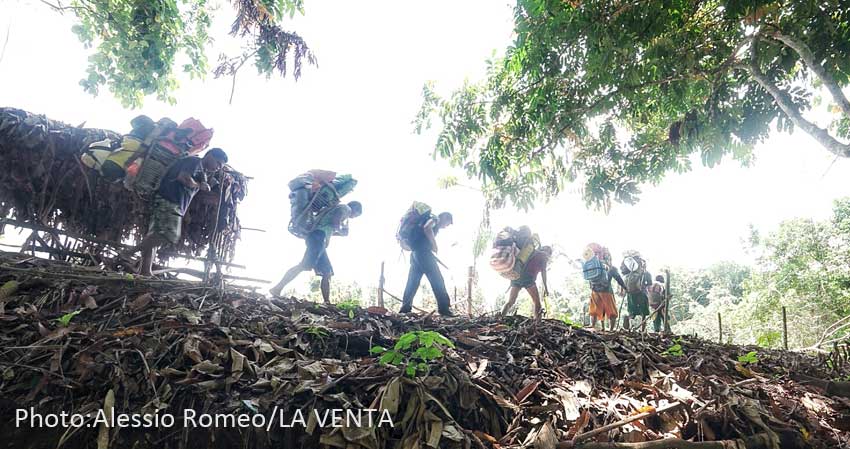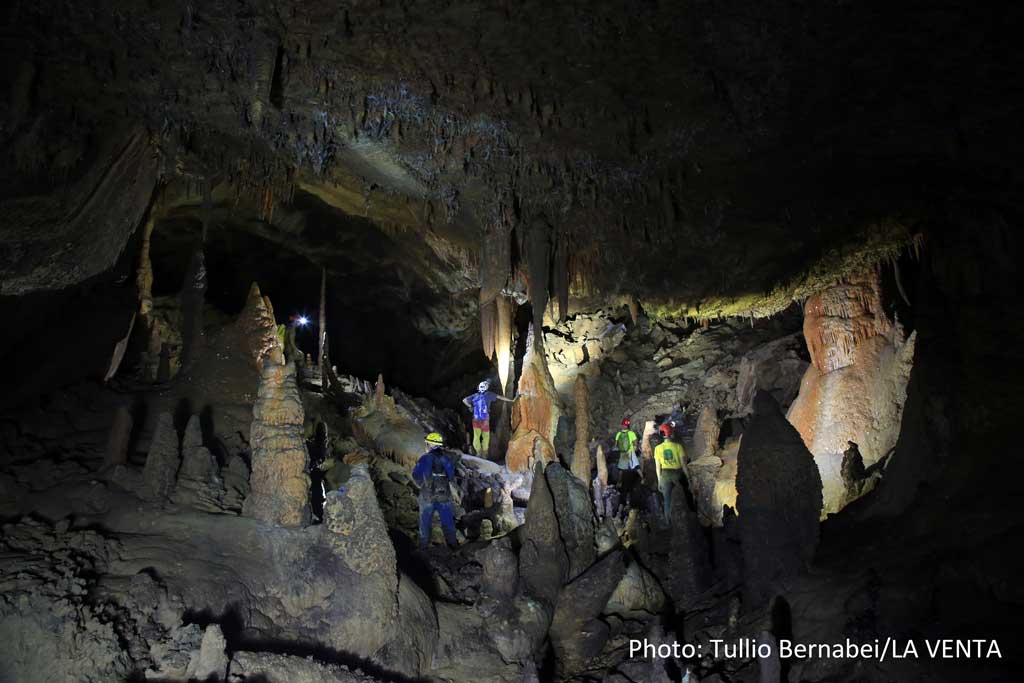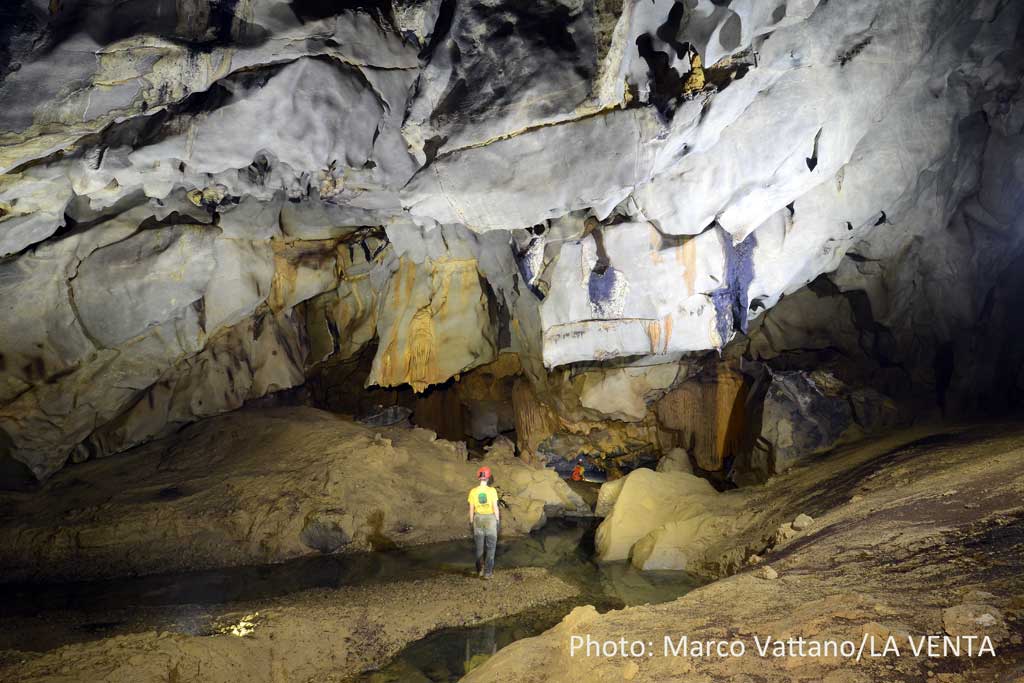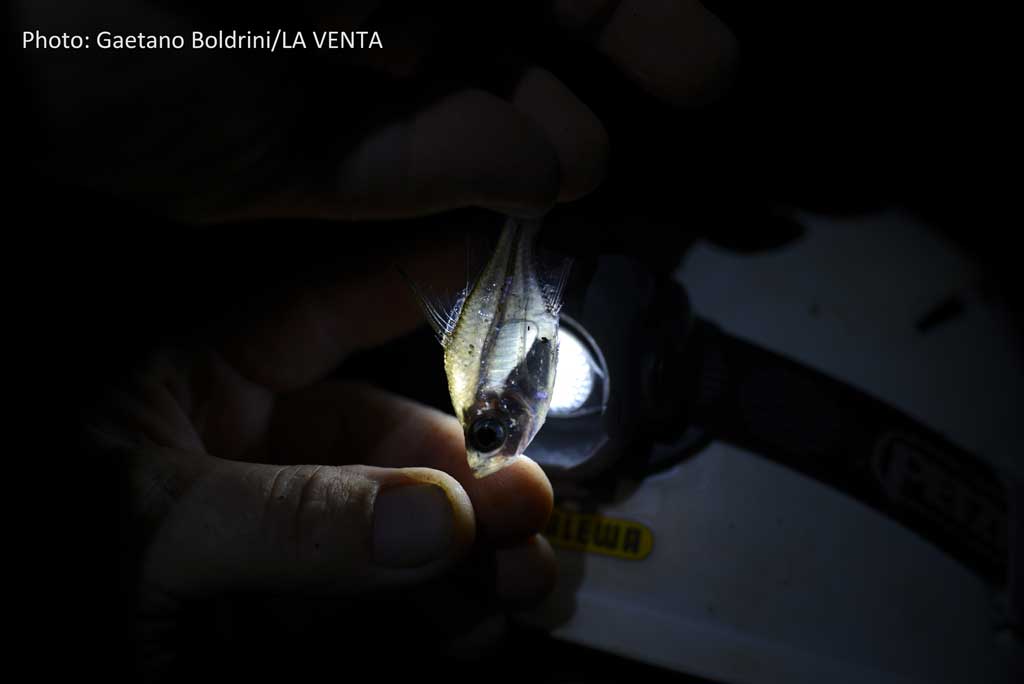We are on our third week of expedition. Our schedule is being respected despite some inconvenience that in any case is always to be taken into account during expeditions. Life here is frenetic: biologists, geologists, photographers, video operators, speleologists, meeting the needs of everyone sometimes is really complicated. But thanks to our team spirit we succeed at it.
Our schedule, with the aim to finish the study in the area of the National Park of the Underground River in Puerto Princesa, is really busy and detailed. International agreements include a number of specific activities that will lead to an improved knowledge of this cave, promoting a more responsible tourist access in the short stretch open to the public. Moreover, this study will become the basis for many other research works to be completed once returned to Italy.
A really important part, fundamental I should say, is the transferring of knowledge and capacity to the Philippine speleologists, not only local but belonging to several national groups. Progression, survey, documentation techniques that we hope may lead to a growth of the whole speleological movement in this nation.
Last note on the exploration and survey of many new galleries: this cave has now reached over 35 kilometers of development.
Leo Colavita
A suspended valley
Six years have passed by and we are here again, in this improbable valley suspended at over 700 meters of altitude, on the eastern ramparts of the Saint Paul Dome. In 2011we arrived here after two days of walk among unstable limestone blocks, guessing the presence of a sandstone canyon that has proven to be the only access way to the summit areas of the mountain. We saw “the valley” from above, intuiting the possibility that there could be entrances to the cave. On our return journey I separated from the group following an incision just visible, until arriving in front of the black spot of a sinkhole.
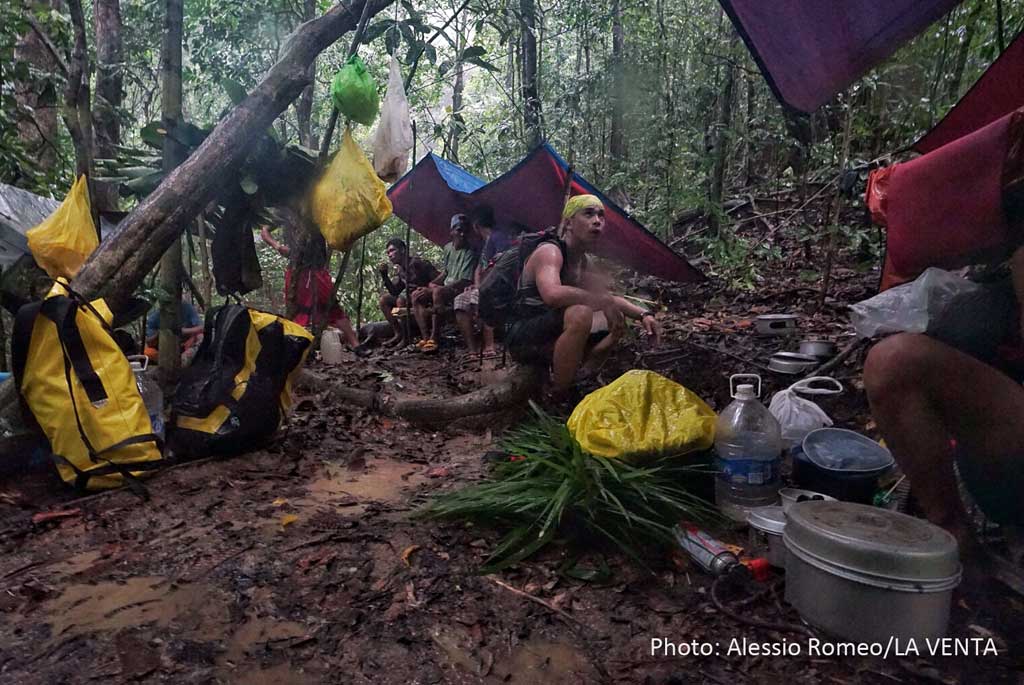
That image has remained imprinted in my mind during the last six years, while by the time my imagination has traced a sequence of shafts and chambers with concretions until sea level, and an improbable link with a large underground river flowing down there, in the belly of this impassable mountain.
So it is not a dream, the sinkhole does exist and it is finally time to descend it to see where ends the water feeding it.
This time we have at least some hours, light and enough rope to take away doubts.
I slip into a light suit after taking off some leech that were already prepared for a quiet meal of blood. I descend the first very slippery meters and I arrive on a steep earth slope leading directly to a first large collapse chamber. From the vault departs a cloud of bats annoyed by my presence. But from a first reconnaissance trip, there seem to be no continuations.
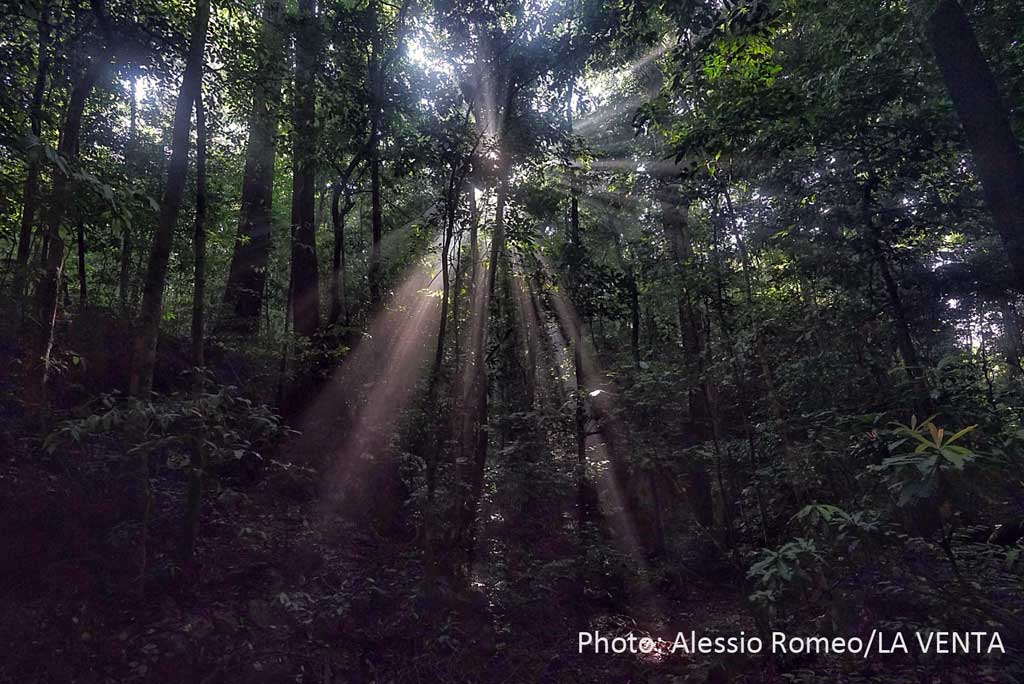
I come out to call Martino and the two Philippine guys. We survey it and take some photos. I slip among the blocks trying to follow a weak stream. I finally arrive in a small lateral chamber full of mud, that make me think that the lower part of the cave may be flooded during the stronger rains. No air. Our dream slowly disappears, but we are not disappointed. It is part of the game.
Nearby we find a shaft that closes after a dozen of meters. There are other feeding areas, but it is already time to come back and the thunders that we have heard for a while are now close, announcing the inevitable afternoon storm.
It is time to come down this mountain that for almost thirty years has inspired our dreams; many of them have come true, but others are destined to remain fantasies.
Leo Piccini
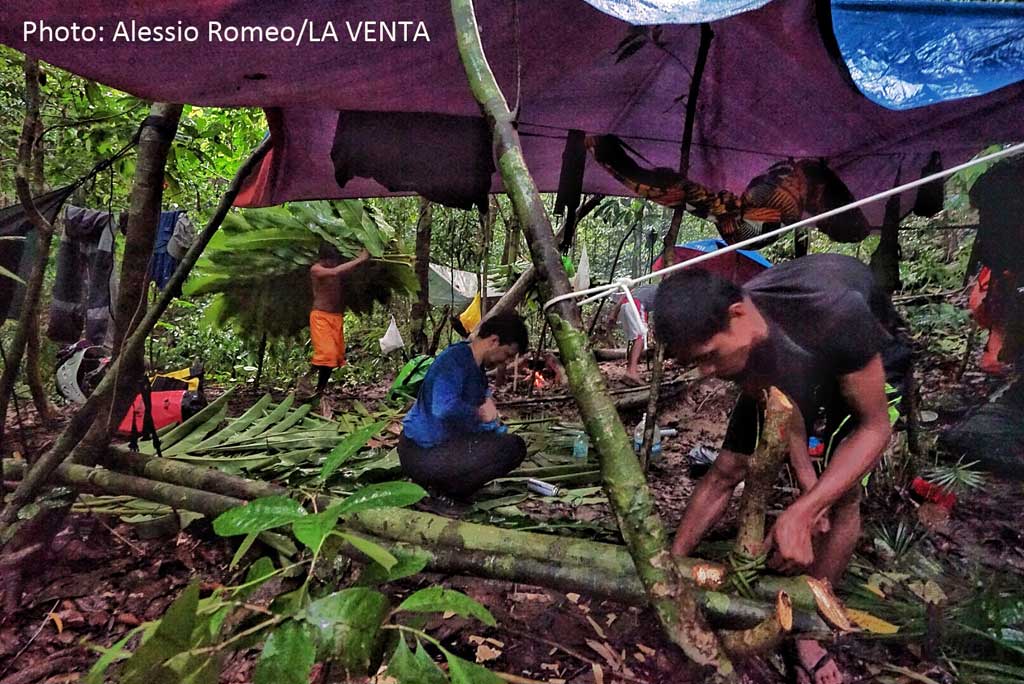
Life in the dark in Palawan
We are again in Palawan to continue the bio-speleological research in the National Park of the Underground River begun in the previous November.
This time we are three people from the Museum of Natural Science History of Florence and we are helped also by Chiara, a colleague of the University of Molise. Compared to the 2016 expedition, we have more time to study throughoutly the fauna of the PPUR and that of some caves located inside the park. Until now we have collected a huge amount of data, sampling specimens that we will be able to study better in the laboratories of the University of Florence, besides sending them to many other specialists of other Universities and Museums that we have already contacted for the definition of the species more difficult to be determined. In this difficult work of classification we are helped by at least twenty specialists of ten different nations and there will be about fifteen species new to science that we have found in this wonderful underground environment.
Knowing the animals that live in the Underground River is the first step to understand the close ecologic relationships linking them, with the aim to undertake the most appropriate conservative programs. We know that here, like in many other hypogean environments, the basis of the food chain is provided by the guano that swiflets and bats leave in the cave. We have figured out that bats produce at least 27 kg of guano every day! This big amount of organic material feeds a large number of small animals that are then the food for bigger animals. Swiflets and bats are also preyed by big migals, centipeds, snakes. So, the presence of swallows and bats is the base of life also in this cave and one of our objectives is to figure out their number to evaluate in the future an eventual decrease and begin a conservative program. The main aim of our job in fact is making compatible the tourist activity in these cave with the conservation of a so extraordinary biodiversity.
So a long work is awaiting us, but for what we have been able to carry out until now we have to thanks the engaged collaboration of the speleologists of La Venta and that of the local caving groups, Gaia Exploring Club and La Karst.
Paolo Agnelli, Stefano Vanni and Marta Ciaramella
Climbing a coconut tree
Here in Palawan, a day dedicated to the practical demonstration of basic competences for the on-rope progression in a cave, together with our friends arrived from several Philippine associations.
The enthusiasm of the young Philippine speleologists is inversely proportional to their knowledge of the correct progression techniques. Hence the will to share our experience to promote a kind of uniformity regarding the technical equipment and the techniques of on-rope progression.
Some pieces of rope and a tree are enough to begin, here we go!
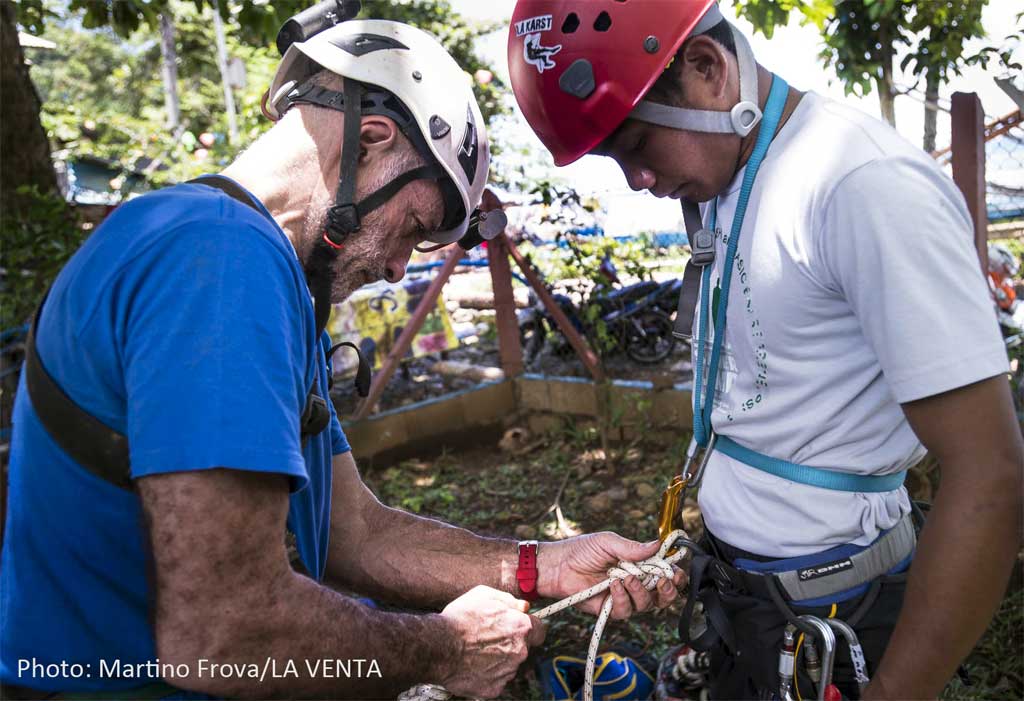
Before climbing we focus on the material…and we see every kind of equipment: longes built with string and lanyard resembling those of sunglasses…but it is of little importance!
It is more important to make our students understand the use of high quality material and the correct and orderly arrangement of the tools in their harness.
So a few things, but well explained, are enough.
We must always start with the right foot, otherwise our life is at risk.
We start climbing…someone uses a gri-gri, others an eight figure or a stop descender, and this make things more complicated. It would be optimal if all the students have the opportunity to use the right material, but sometimes they can’t do it.
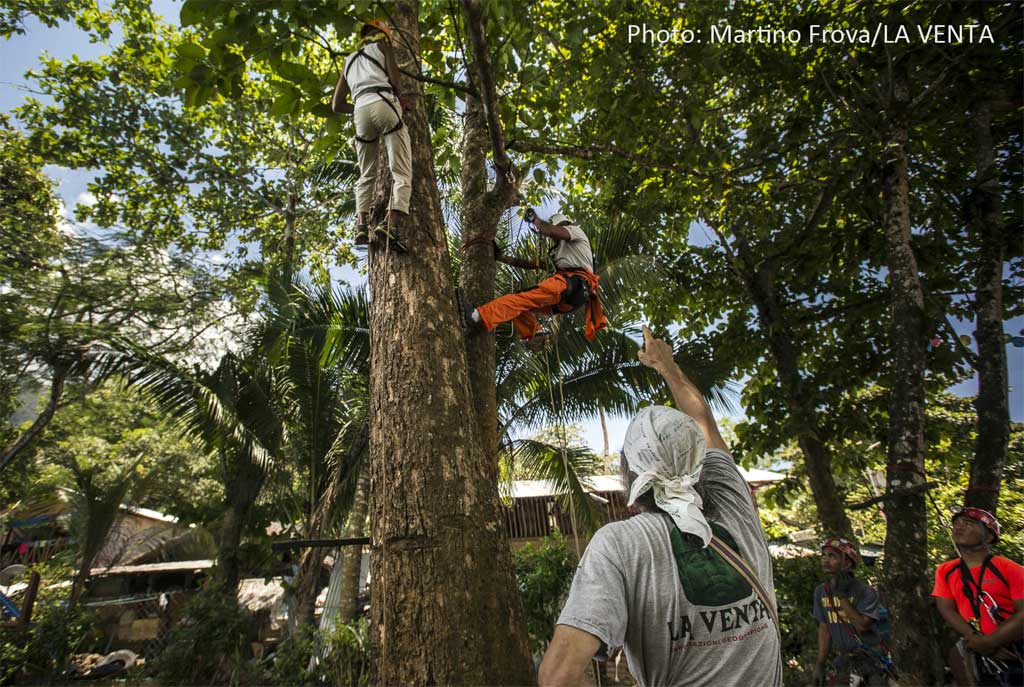
There is only one handle for all and finally, changing the chest ascender, they can understand how easy is progressing with the right tools.
One day is not enough to complete all the technical notions provided in a normal speleology course, but they can at least understand that to rebelay first you have to pass the chest ascender and then the handle, that a longe must be made at least by a 8-mm dynamic rope and that it is not complicated to link two ropes, trying in this way a more complex manoeuvre like overpassing the knot.
But, remember, helmet on your head if you have to climb a coconut tree!
Martino Frova
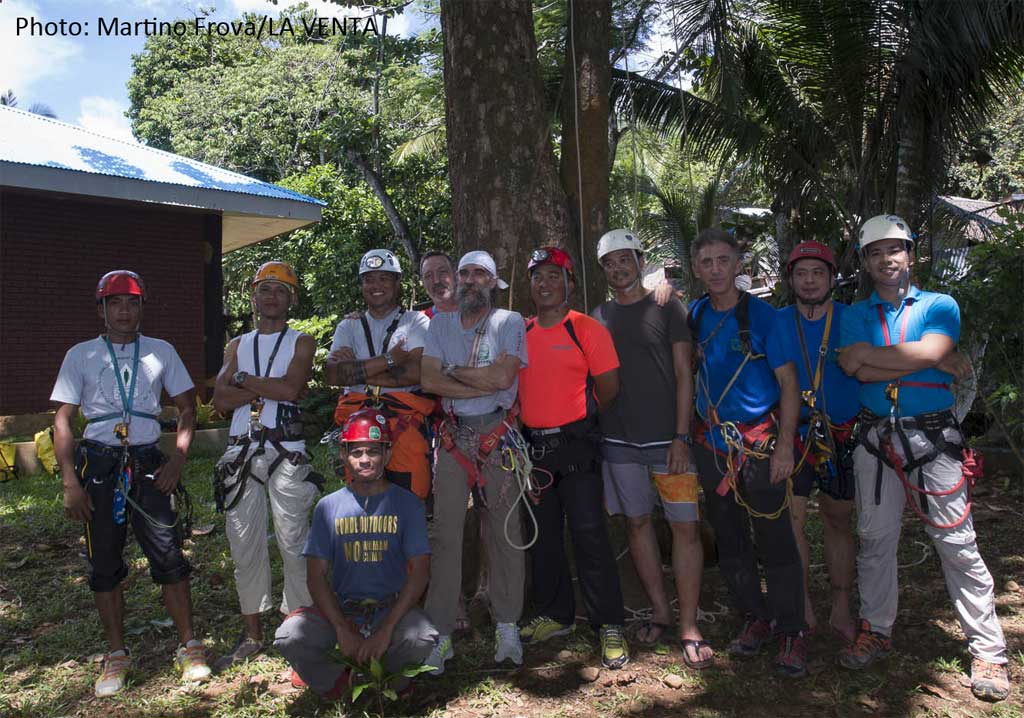
Participants: Ada De Matteo, Alessio Romeo, Antonio De Vivo, Carla Corongiu, Chiara Paniccia, Fabio Giannuzzi, Felice La Rocca, Gaetano Boldrini, Giorgio Annichini, Giovanni Fiorini, Ilenia D’Angeli, Jo De Waele, José Calaforra, Laura Sanna, Leonardo Colavita, Leonardo Piccini, Luca Massa, Marco Camorani, Marco Vattano, Marta Ciaramella, Martino Frova, Paolo Agnelli, Stefano Vanni, Tommaso Santagata, Tullio Bernabei, Vittorio Crobu.
Research Institutes involved: University of Bologna, University of Florence, Museum of Natural History of Florence, National Institute of Nuclear Physics of Turin, University of Almeria.
Institutional sponsors: Italian Embassy in the Philippines, Philippines – Italy Debt for Development Swap Program, Puerto Princesa National Park, Tagbalay Foundation, City of Puerto Princesa.
Technical sponsors: Leica Italy, Laserscangst, Eragest by Tiziano Conte, Lifesaver, Amphibious, Ferrino, De Walt, Dolomite, Scurion, Tiberino.



